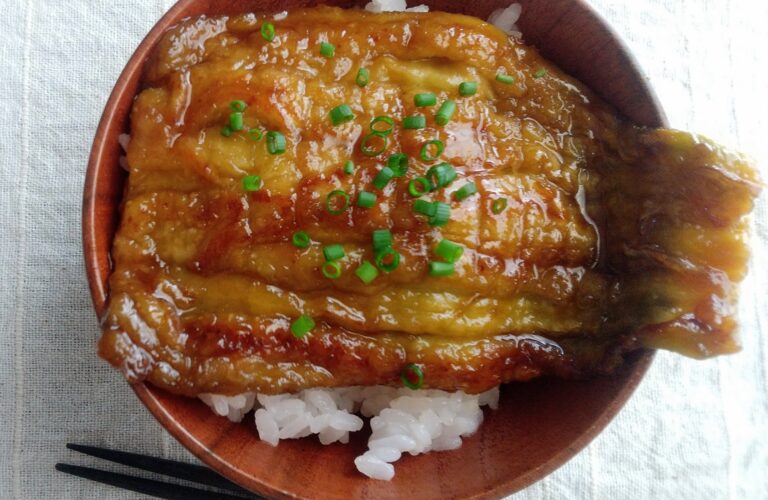Kabayaki of unagi (eel) is so traditional food that is made with grilled eel dipped in a sauce. It is so popular that there are a lot of restaurants that specialize in the dish. Often, kabayaki is served on top of a bowl of rice. I used to love eating a bowl of rice with kabayaki sauce without eel when I was a child, and it was so delicious. Recently, I came across a dish that uses eggplant for kabayaki instead of eel, then I made it. It was so good and what is more, totally vegan!
What is Kabayaki?
Kabayaki has been traditionally made with fish (commonly eel). It is usually prepared by cutting open the fish to make the fish flat and skewering it, then grilling it over charcoal. Season it by dipping the frilled fish in a sauce that is made with soy sauce, sugar, mirin (Japanese sweet rice wine), and sake. In most traditional Japanese restaurant which specializes in kabayaki of unagi (eel), it should be made by repeating the grilling and dipping process several times.
In most Japanese zen temples, it used to be strictly prohibited to eat animals, so monks invented zen cooking (Buddhist vegetarian cooking) which is called “syojin ryori” in Japanese. Since monks couldn’t eat meat and fish, they came up with making imitated food that looks like meat or fish but is made with vegetables. In this way, eggplant kabayaki was born.
The photo below is a typical Kabayaki of Unagi
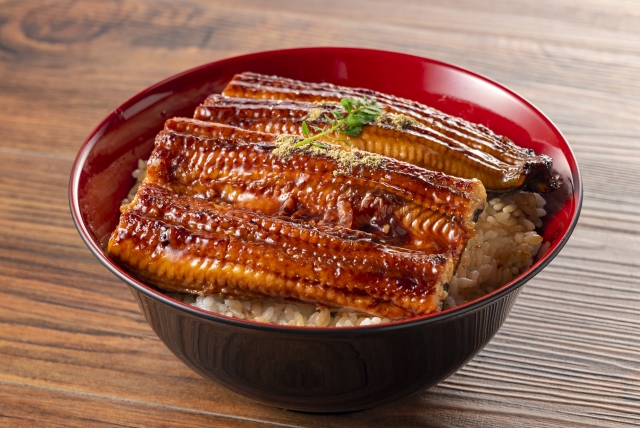
Ingredients you will need
Eggplants – In Japan, we use long types of eggplants to make this dish, but any eggplants work perfectly!
Soy sauce – I use “koikuchi syoyu” (Japanese dark soy sauce) for this recipe which is the most common type of soy sauce in Japan, but you can use any soy sauce. Make sure to adjust the amount of soy sauce if you use a saltier or less salty one.
Sugar – You can use any sugar for the sauce, even maple syrup or agave syrup are fine.
Sake – If it’s not available in your area, use white wine instead.
Mirin – Mirin is a sweet Japanese traditional rice wine. You can make the substitution by mixing 1 tbsp of sake (white wine) and 1 tsp of sugar for 1 tbsp of mirin.
Ginger powder – You can use grated ginger if you have fresh ginger, or simply omit it if you don’t kike ginger flavour.
Plain flour – Plain flour clings to the eggplants and make the soy sauce thicken. If you want your kabayaki gluten-free, you can skip flouring your eggplants
Steamed rice – Here is the recipe for the perfect steamed rice
How to cook Japanese Rice in a dutch oven
Green onion – This is for some colour. Other options for the garnish are sesame, nori (toasted sea weed), and chive.
Step & step Guide for This Recipe
1. Peel your eggplants and chop the ends off. Wrap each eggplant with cling film and microwave for about 2-3mins or until softened. Let them cool in the cling film until you can touch them. You can use a steamer for cooking the eggplants.
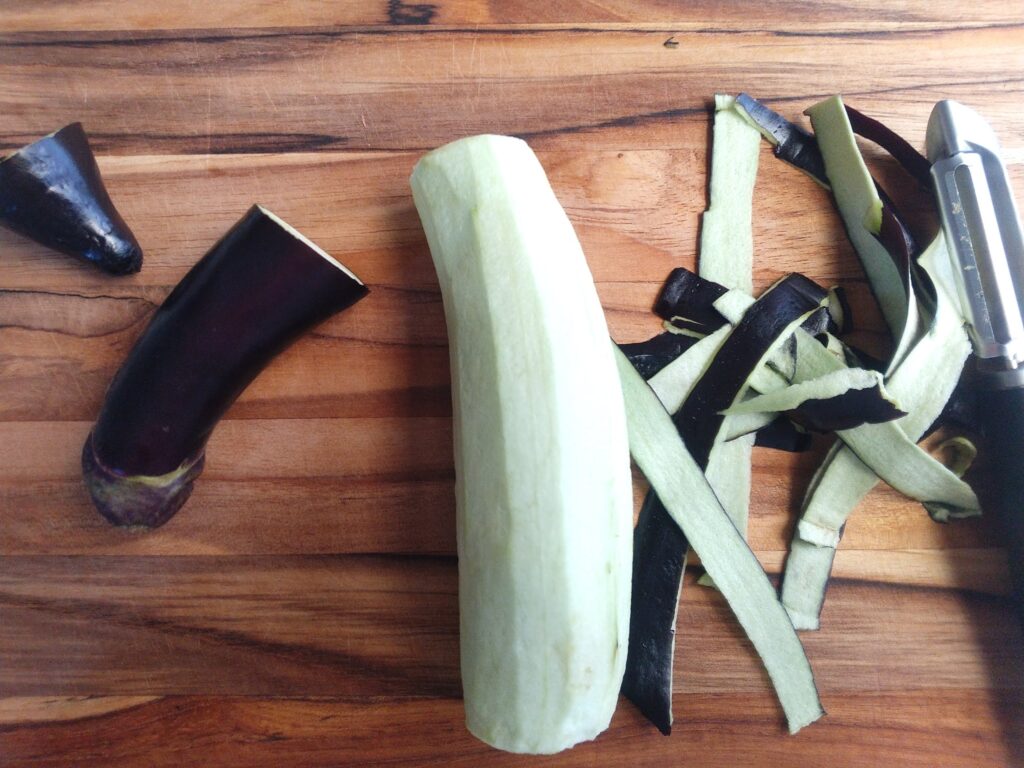
2. Once the eggplants are cooled, cut open the middle (not all the way through) and score them with a knife like in the photo below.
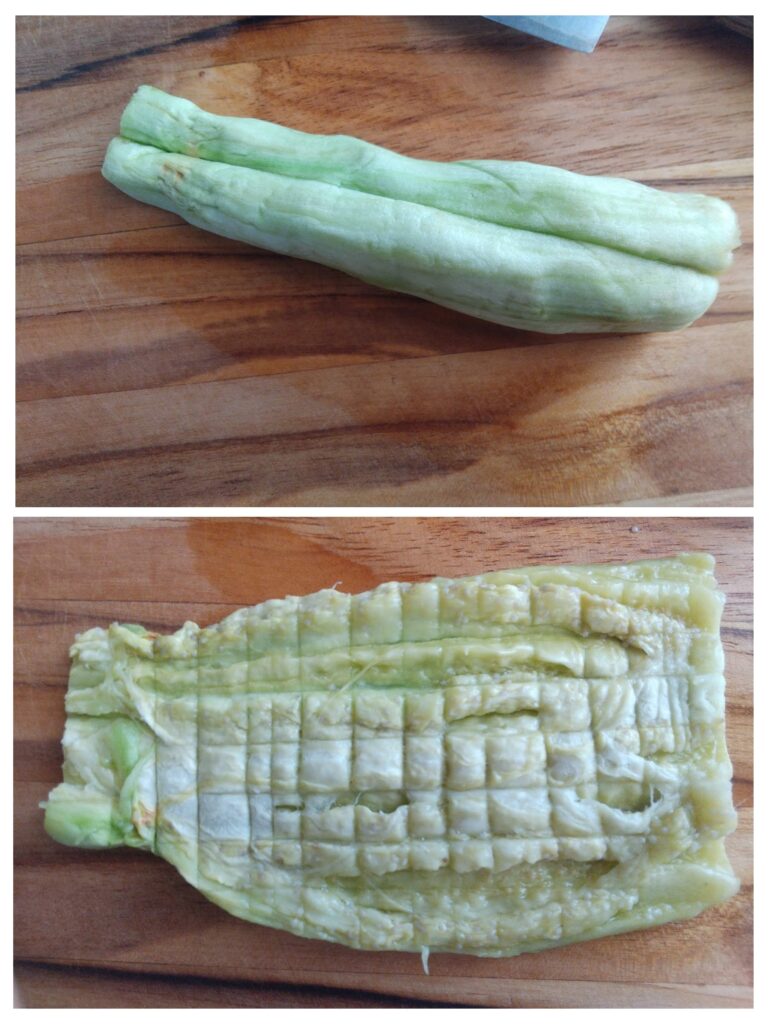
3. Mix soy sauce, sake, sugar, mirin, and ginger powder in a bowl and set aside.Flour each eggplant, and fry both sides of them with oil over medium-high heat. Then, pour the soy sauce mixture and continue cooking until your eggplants have soaked the liquid and become brown.
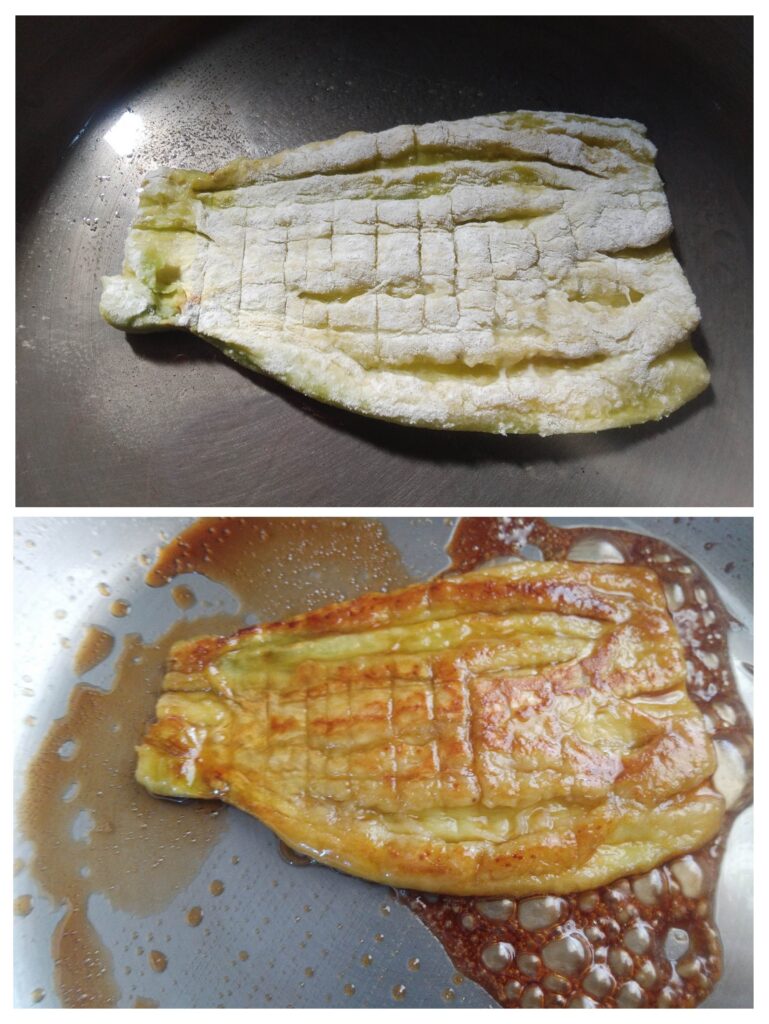
4. Serve them with steamed rice with a sprinkle of green onion on top. Enjoy it!

Q & A
What to use for the recipe if I don’t like eggplants?
Firm tofu, tempeh, squash, and bell pepper are also great to make kabayaki!
Can I add other vegetables for some colour?
Yes, of course! I like to add some leek or broccoli for green colour and bell pepper for red colour.
What to use for garnish apart from green onion?
Other options for garnish are sesame, nori (toasted seaweed), and your favourite herbs like chive.
How can I store eggplant kabayaki in the fridge?
You can store the kabayaki in the fridge for up to 1 week. Make sure to put it in an airtight container or cover it with cling film.
Can I freeze eggplant kabayaki?
Yes, leftover kabayaki can be frozen perfectly for up to 1 month. Reheat it in a microwave or thaw it at room temperature, then reheat it in a frying pan over medium-low heat if you don’t have a microwave.
More “Zen” Recipes to Enjoy
Potato Tempura With Sweet Miso Sauce
Deep Fried Tofu Balls (Ganmodoki)
Vegan Deep Fried Tofu with Sweet Miso Sauce and Peanuts (Miso Peanut Karaage)

Eggplant Kabayaki Rice Bowl (Vegan)
Equipment
- 1 Fryingpan
Ingredients
- 2-4 Eggplant
- 2 tbsp Soy Sauce
- 2 tbsp Sugar
- 2 tbsp Sake White Wine works well too
- 2 tbsp MIrin You can use 1tsp Sugar +1tbsp Sake
- ¼ tsp Ginger Powder or Grated Ginger
- some Plain Four
- some Oil For frying
- some Steamed Rice 150-250g per person
- some Green Onion (chopped)
Instructions
- Peel your eggplants and chop the ends off. Wrap each eggplant with cling film and microwave for about 2-3mins or until softened. Let them cool in the cling film until you can touch them. You can use a steamer for cooking the eggplants.
- Once the eggplants are cooled, cut open the middle (not all the way through) and score them with a knife like in the photo below.
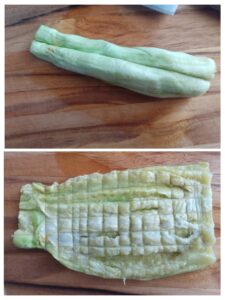
- Mix soy sauce, sake, sugar, mirin, and ginger powder in a bowl and set aside.Flour each eggplant, and fry both sides of them with oil over medium-high heat. Then, pour the soy sauce mixture and continue cooking until your eggplants have soaked the liquid and become brown.
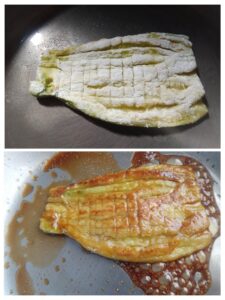
- Serve them with steamed rice with a sprinkle of green onion on top. Enjoy it!
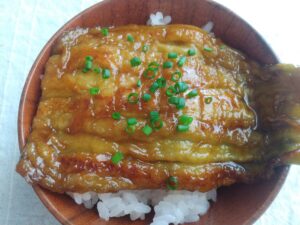
Notes
- You can use any type of soy sauce for this recipe, but you have to adjust the amount of soy sauce because the level of saltiness depends on the product. I use Japanese ordinary soy sauce which is called koikuchi syoyu.
- You can other vegetables apart from eggplants for colour such as leeks, peppers spinach, and more.
- Other options for garnish are sesame, nori (toasted seaweed), and your favourite herbs.

